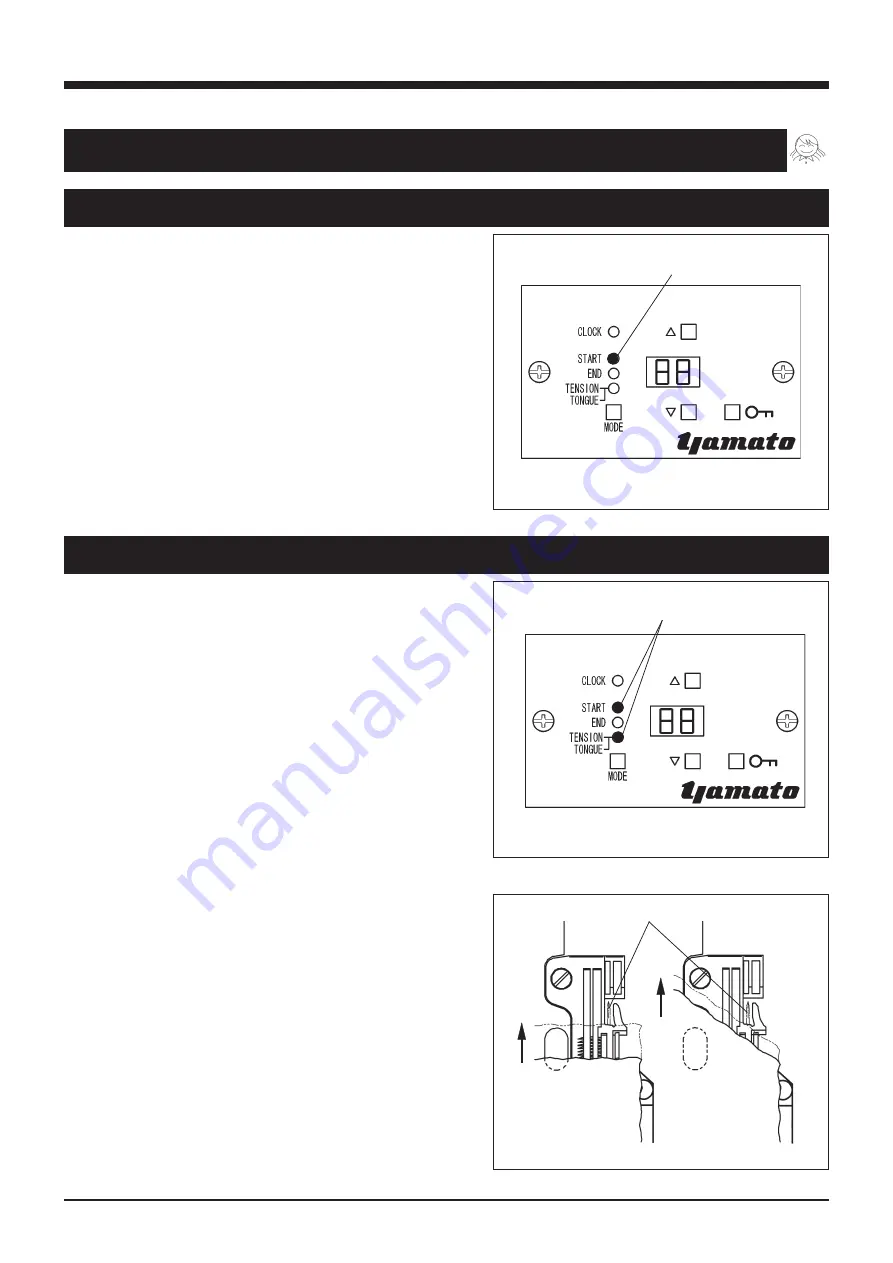
12
AZ-SD, AZF-G/BT43
3.Proper operation
3.3 Adjustment at beginning of sewing
Fig. 3-3
Fig. 3-4
Fig. 3-5
lighted
lighted
3.3.2 Stitch plate tongue adjustment at beginning of sewing
3.3.1 Tension releaser adjustment at beginning of sewing
(1) Press the “MODE”
key several times to ligh
the
“START”
and
“TONGUE”
lamps.
(2)
Adjust the count by pressing the “▲” and “▼”
keys so that the stitch plate tongue sticks
out when the sensor detects the material end
and the material reaches the needle holes.
(Two counts indicate one stitch.)
(1) Press the “MODE”
key several times to light
the
“START”
lamp only.
(2)
Adjust the count by pressing the “▲” and
“▼” keys so that the tension releaser changes
the thread chain seam condition to the plain
sewing seam condition when the sensor detects
the material end and the material reaches
the needle holes. (Two counts indicate one
stitch.)
tongue sticks out









































